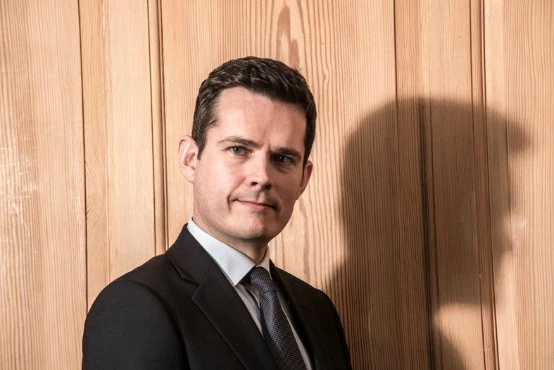
Member Article
Getting the most from a multi-generation workforce
Workforces can be made up of people aged 18 to 80 and beyond. How can businesses ensure all employees have their different needs met?
Gen Z is entering the workforce and at the same time, people are choosing to work for longer than ever before. As a result, the workplace today could include people from five distinct generations.
From the Silent Generation (born before 1946) and the Baby Boomers (born 1946 – 1964), to Generation X (born between 1965 and 1980), the Millennials (born 1981 – 1998) and finally, the newest working cohort, Generation Z (born after 1998), we are increasingly working with colleagues aged 18 to 80.
While this has many positive benefits for workers and businesses, it also throws up issues and concerns. How can you engage, reward and motivate people from such different generations, who have different wants and needs?
Stuff the stereotypes We all know that millennials are perennial job hoppers, always with an eye on their next role. And Baby Boomers are technologically challenged, with the Silent Generation even more digitally incapable. This is the opposite of Gen Z, who are never off their phones and communicate solely through emojis and selfies. Then we have the Gen Xers, who are independent to a fault, pushing back at any kind of management.
We all fit within one of these generational groups, but do you recognise those attributes in yourself? Most people would be likely to respond negatively if you made those presumptions based on their age. These stereotypes won’t help you in creating an inclusive workplace or cooperative team. We need to forget these false labels as they are sweeping and often untrue.
Recognising the real differences Having said that, people do have different wants and needs. Some people crave hands on management with frequent feedback, whereas others prefer a more laissez faire approach. For example, recent statistics suggest that the desire for autonomy increases with age with 30% of Baby Boomers valuing this vs 19% of Generation Z. However, this cannot be judged purely based on age. These are more accurately described as personality types and the best way to understand who fits into what bracket is by knowing your employees.
It’s true to say that age and generation can have some impacts. One study found that Generation Z are mostly interested in ‘future-proof’ jobs and job stability. This can partly be explained by the fact that they are entering the workforce at a time when we’re told new technology like robotics and machine learning will soon change the world of work forever. But all age groups have an interest in stability.
Life events can also influence approach to working. Research suggests that, while the wages of the over-50s have recovered to levels seen before the global financial crash, millennials who entered the job market during the crisis are still suffering “scarring” effects on their earnings. This may well affect how they approach employment.
Blending teams We should recognise that there are differences between the groups created by variances in age, stage and life experience. But these should be an advantage in the workplace, not a negative. In fact, complementary teams and blended skills set are best for a successful tea dynamic. Gen Z are digital natives and may well have valuable skills to offer their colleagues. Likewise, the Silent Generation and Baby Boomers have a wealth of life experience that they can bring to bear on projects. One study found that 53% of those in multigenerational workforces believe they have learned a lot from other generations, and 35% believe they have been able to teach their colleagues.
Recognising different strengths and skills and bringing these together into blended teams is a route to success. It is also the surest way to overcome any age-based mistrust between colleagues.
Setting up for success For team leaders and HR departments, it can be a daunting prospect managing people aged from 18 to upwards of 80. Of course, a one size fits all approach won’t work. But then, it rarely works within human resourcing, for example it’s been understood that Baby Boomers and Generation X are the generations most interested in flexible working, compared to Generation Z who value progression opportunities more. Even with a workforce of one generation, there as many nuances and differences within the generational groups as there are between them. No two people are alike.
We are influenced by our age and the experiences we live through. But we are also influenced by gender, nationality, family situation, and any number of other factors. The best managers understand the complementary skills and expertise across a business and can combine these into successful teams. Five generations under one roof simply opens new possibilities.
This was posted in Bdaily's Members' News section by Richard Morris, CEO, IWG UK .
Enjoy the read? Get Bdaily delivered.
Sign up to receive our popular morning London email for free.




 test article 123456789
test article 123456789
 hmcmh89cg45mh98-cg45hm89-
hmcmh89cg45mh98-cg45hm89-
 test456456456456456456
test456456456456456456
 test123123123123123123
test123123123123123123
 test xxxdiosphfjpodskhfiuodsh
test xxxdiosphfjpodskhfiuodsh
 Savour the flavour: North Tyneside Restaurant Week returns for 2024
Savour the flavour: North Tyneside Restaurant Week returns for 2024
 Six steps to finding the right buyer for your business
Six steps to finding the right buyer for your business
 Stephen signs off on a special night
Stephen signs off on a special night
 Life’s a Peachaus: Gillian Ridley Whittle
Life’s a Peachaus: Gillian Ridley Whittle
 Making a splash: Phil Groom
Making a splash: Phil Groom
 Making workplace wellbeing a priority
Making workplace wellbeing a priority
 A record of delivery, a promise of more: Ben Houchen
A record of delivery, a promise of more: Ben Houchen